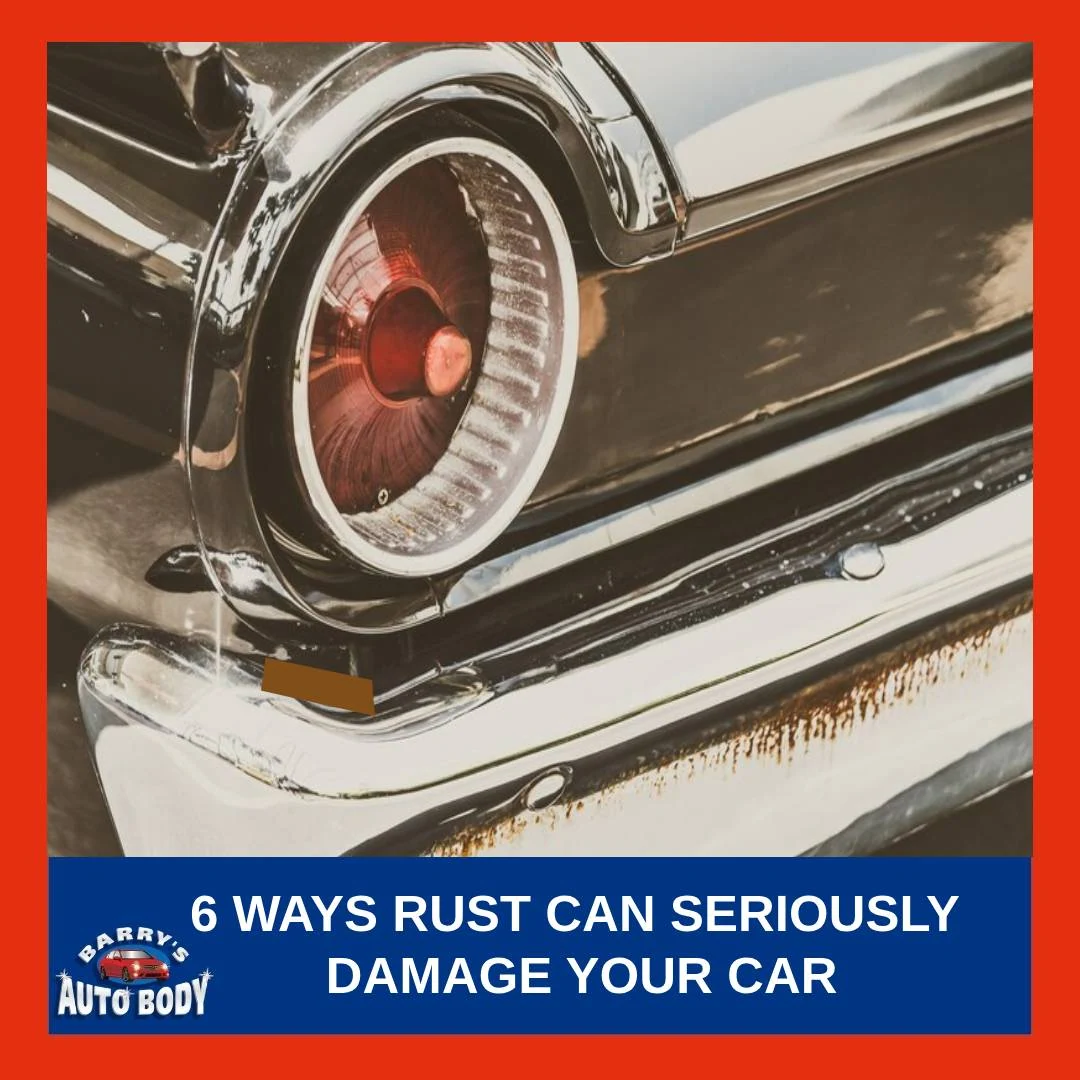Rust is like the silent enemy of your car—it creeps in unnoticed and can wreak havoc over time. It forms when metal reacts with oxygen and moisture, leading to corrosion. While it’s almost inevitable in certain climates (humid areas or places where road salt is used in winter), rust doesn’t have to spell disaster for your vehicle. By understanding how rust damages your car and preventing it, you can save yourself from costly repairs and keep your ride in top shape.
Here are six ways rust can cause severe damage and what you can do to fight back.
1. Weakens Your Car’s Frame
Your car’s frame is its skeleton—it holds everything together and keeps you safe. But when rust attacks the frame, it can weaken the metal, putting your car’s structural integrity at risk.
How It Happens:
- Moisture, road salt, and dirt speed up rust formation.
- Small rust spots can grow into big problems if ignored.
- Rust often starts in hidden areas, so you might not notice it until it’s too late.
What Could Go Wrong:
- A weakened frame might not hold up well in a crash.
- Suspension parts attached to the frame can become unstable.
- Severe rust can make your car unsafe to drive and cause safety inspections to fail.
How to Fight It:
- Regularly check the undercarriage and frame for rust.
- Wash your car often, especially in winter when road salt is everywhere.
- Consider rust-proofing treatments to keep corrosion at bay.
2. Attacks the Undercarriage
The undercarriage is like the underdog of your car—it takes a beating from road debris, water, and salt, making it a prime target for rust.
How It Happens:
- Water, dirt, and salt build-up underneath your car.
- If you don’t clean it, moisture sits on the metal, speeding up rust.
- Small rust spots can grow unnoticed until they cause major damage.
What Could Go Wrong:
- Rusty suspension parts can mess with your car’s handling.
- Fuel lines can corrode, leading to dangerous leaks.
- A damaged exhaust system can cause performance issues or fail emissions tests.
How to Fight It:
- Get an undercarriage wash after driving on salted roads.
- Apply an anti-rust undercoating for extra protection.
- Park in a dry, covered area to minimize moisture exposure.
3. Ruins Critical Mechanical Parts
Rust doesn’t just mess with your car’s looks—it can also attack the mechanical parts that keep it running.
How It Happens:
- Brake lines, fuel tanks, and other vital parts can rust over time.
- Small rust spots can spread to connected components.
- Humidity and condensation make things worse.
What Could Go Wrong:
- Rusty brake lines can fail, putting you at risk.
- Corroded fuel lines might leak, creating a safety hazard.
- A rusty exhaust system can lead to leaks and higher emissions.
How to Fight It:
- Schedule regular inspections to catch rust early.
- Use protective coatings on brake and fuel lines.
- If rust is already there, call a pro to remove it.
4. Damages Paint and Leads to More Rust
Your car’s paint isn’t just for looks—it’s a shield against rust. When the paint gets chipped or scratched, the metal underneath is exposed and vulnerable.
How It Happens:
- Rock chips, door dings, and scratches let moisture reach the metal.
- Small rust spots can spread quickly if ignored.
- Sun damage can weaken the paint, making it easier for rust to start.
What Could Go Wrong:
- Rust spots can grow and eat through the metal.
- You might need expensive repairs or panel replacements.
- Paint damage can lower your car’s resale value.
How to Fight It:
- Touch up paint chips as soon as you see them.
- Use wax or ceramic coatings for extra protection.
- Regular detailing and inspections can keep your paint in good shape.
5. Messes with Electrical Systems
Modern cars rely on electrical components and sensors for safety and performance. Rust can interfere with these systems, causing all sorts of problems.
How It Happens:
- Moisture can corrode wiring and connectors.
- Rust near sensors can cause them to give false readings.
- Damaged grounding points can lead to electrical failures.
What Could Go Wrong:
- ABS or airbag sensors might stop working, compromising safety.
- Corroded battery terminals can cause starting issues.
- Electrical problems caused by rust can be expensive to fix.
How to Fight It:
- Check for moisture build-up around the wiring.
- Use dielectric grease on connectors to prevent corrosion.
- If you notice electrical issues, get a professional inspection.
6. Lowers Resale Value and Costs You Money
A rusty car isn’t just ugly and can hurt your wallet. Rust can slash your car’s resale value and lead to expensive repairs.
How It Happens:
- Visible rust makes your car look neglected.
- Rust damage to structural parts can scare off buyers.
- Some insurance policies and warranties don’t cover rust-related damage.
What Could Go Wrong:
- Your car’s resale value takes a hit.
- Repairing rust damage can be costly—or even impossible.
- In extreme cases, rust can make your vehicle unsafe to drive.
How to Fight It:
- Stay on top of maintenance and rust prevention.
- If rust is already there, get professional help.
- Apply rust protection treatments before winter to slow corrosion.
Rust is a fact of life for car owners, but it doesn’t have to ruin your vehicle. Whether it’s weakening the frame, damaging mechanical parts, or making your car look bad, rust can cause serious problems if you ignore it. The good news? You can fight back with regular inspections, cleaning, and protective treatments. If rust has already taken hold, don’t wait—get it treated by a professional to stop the damage from spreading. A little effort now can save you from big headaches (and expenses) down the road. Your car will thank you!

